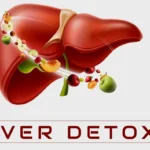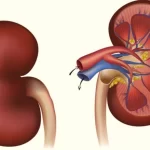The human heart and Heart disease
Friends, we know about human heart and Heart disease. The guts are a crucial part of the body. In humans, it’s situated within the middle of the chest, slightly to the left and beats about a million times each day and 60-90 times during a minute. It keeps pushing blood into the body with every beat.
The heart gets nutrition and oxygen through the blood, which is provided by the coronary arteries. This organ is split into two parts, right and left. There are two chambers (named atrium and ventricle) on all sides, right and left of the guts. In total there are four chambers within the heart.
The right side receives contaminated blood from the body and pumps it into the lungs, and therefore the blood is purified within the lungs and returns to the left a part of the guts from where it’s pumped back to the body. Four valves, two on the left (mitral and aortic) and two on the proper side of the guts (pulmonary and tricuspid) act as one-way gates to direct blood flow.
There are many Heart disease like:
- Pericardial effusion
- cardiac failure
- heart attack
- congenital heart condition
- Rheumatic heart condition
Friends, today we’ll discuss two heart diseases during this post.
1- Rheumatic heart condition
2- Pericardial effusion
Rheumatic heart disease:
Friends, Rheumatic heart condition may be a condition during which the valves of the guts (the lid-like structure, which prevents blood from flowing back) are damaged by a disease process. This process starts with a streptococcal sore throat caused by streptococcal bacteria. If not treated, this streptococcal sore throat turns into infectious disease. Rheumatic heart condition develops thanks to recurrent infectious disease.
Rheumatic fever is a disease that affects the body. especially the tissues connecting the guts, joints, brain, or skin. When infectious disease permanently damages the guts, that condition is named rheumatic heart condition. People of all ages can suffer from severe infectious disease, but it always occurs in children between five and 15 years aged.
Symptoms of infectious heart disease
- fever
- Swollen, soft, red and painful joints, especially within the knee, ankle, elbow or wrist.
- Bumps or knots on swollen joints.
- Uncontrolled activity of the muscles of the hands, feet or face.
- Weakness and breathlessness.
What happens if the guts valve is damaged?
A damaged heart valve either doesn’t close completely or doesn’t open completely. the primary condition is medically called insufficiency and therefore the second is stenosis.
The blood within the heart valve, which isn’t completely closed, goes back to an equivalent chamber of the guts from which it’s pumped. this is often called regurgitation or leakage. With a subsequent heartbeat, this blood crosses the valve and mixes with the normally flowing blood. This extra amount of blood passing through the guts puts an additional burden on the guts muscle.
When the guts valve doesn’t open completely, then the guts have got to pump quite a traditional amount of blood, in order that enough blood goes into the body during a narrow way. Generally, no symptoms are seen until the trail becomes very narrow.
Its identity.
Chest X-rays and Icyji (electrocardiogram) are two common tests that indicate whether a heart has been affected.
Its treatment.
Physicians prescribe their treatment supported the patient’s general health, medical record, and severity of illness.
Since the infectious disease is that the explanation for a heart condition, its best treatment is to stop the recurrent infectious diseases.
How to stop it.
The best thanks to preventing rheumatic heart condition are to stop the infectious disease. Immediate and proper treatment of streptococcal sore throat can prevent this disease. If there’s an infectious disease, its repeated invasion is often prevented by continuous antibiotic treatment.
Heart disease Pericardial effusion:
Pericardial effusion defines the presence of abnormal amounts of fluid within the pericardial cavity. this might flow from to local or systemic disorders, or it’s going to be unknown. Pericardial effusion is often acute or chronic, and therefore the time it takes to develop can have a profound effect on the patient’s symptoms.
The pericardial cavity normally contains 15–50 ml of fluid, which acts as lubrication of the pericardium’s inner and parietal layers. The pericardium and pericardial fluid provide important contributions to cardiovascular function.
The normal pericardium can spread the evenly distributed force within the heart to accommodate small amounts of fluid without making a big change within the Intra pericardial pressure, the pericardial structures help to make sure a consistent contraction of the myocardium and therefore the force across the guts. Distribution of.
Clinical manifestations of pericardial effusion are highly hooked into the speed of accumulation of fluid within the sac. Rapid accumulation of pericardial fluid can increase intra-pericardial pressure even with fluids as low as 80 mg, while slow-moving fluid can increase up to 21 without symptoms.
Due to pericardial effusion:
The reason for abnormal material production depends on the underlying cause:
- Usually after injury (pericarditis)
- Transudative fluid impedes fluid drainage, which occurs through the lymph vessel.
- Exudative fluid occurs after infection, inflammation, malignancy or autoimmune processes within the pericardium.
- Idiopathic: In most cases, the underlying cause isn’t identified.
Contagious - HIV infection can produce pericardial effusion through several of the subsequent mechanisms:
- After bacterial infection
- Opportunistic transition
- Malignancy (Kaposi sarcoma, lymphoma)
- Viral: the foremost common explanation for pericarditis and myocarditis infection is viral. Common organisms include.
Pyogenic (pneumococci, streptococci, staphylococci, Neisseria, tuberculous) Fungi or Fungal (Histoplasmosis, Coccidioidomycosis, Candida) Other infections (syphilitic, protozoal, parasitic) - Post-operative / post-procedural pericardial effusion in heart transplant patients has been related to an increased prevalence of acute rejection.
Other less common causes include the following:
- Eufemia
- Myxedema
- Severe pulmonary hypertension
- radiation therapy
- Acute myocardial infarct including complication of free wall rupture
- Hemorrhagic effusion thanks to sac leakage thanks to aortic dissection
- the strokes
Hypersensitivity
- Systemic LE
- Rheumatoid arthritis
- Ankylosing spondylitis
- Rheumatic fever
- Drug-related: Like phenytoin, anticoagulants, methysergide, procainamide, hydralazine, isoniazid, minoxidil,
Heart wall leakage symptoms
Friends, the heart wall leakage symptoms can vary greatly depending on the severity of the disorder. Usually, the presence of a heart wall leakage symptoms wall indicates that this disorder is affecting blood flow. Many people with moderate or mild heart valve disease do not experience heart wall leakage symptoms. However, heart wall leakage symptoms may include the following.
- Cardiovascular
- Chest pain, pressure, discomfort, Characteristically, pericardial pain is relieved by sitting up and bending forward and increases when lying straight.
- Lightheadedness, fainting
- Increased heartbeat
- Respiratory
- cough
- Dyspnea
- Hoarseness
- Gastrointestinal
- Hiccups
- Neurologic
- Anxiety
- a myth
Pericardial effusion – symptoms:
- Pericardial friction rub: the foremost important physical sign of pericarditis may have up to three components per cycle and is of high frequency, scraper and hoarse. It sometimes appears when rapid pressure is applied to the left lower sternal border of the chest from the diaphragm of the stethoscope.
- Tachycardia
- Tecnapia
- Decreased breathing (for secondary pleural effusion)
- Hepatosplenomegaly (enlarged liver and spleen)
- Weak peripheral pulse
- Edema
- Cyanosis
Some Ayurvedic remedies for heart disease:
Patients with an obstruction within the arteries of the guts get relief in heart pain by taking gauze extracts. Extracts are often taken from 2 to six lids by adding an equal amount of water. It should be taken on an empty stomach within the morning before meals. Heart pain increases agility and quickness, and bypass surgery is extremely expensive.
Whole boiled peanuts and coral lentils, wheat bread, barley porridge, Parwal, bitter gourd, onions, carrots, ginger, dry ginger, asafetida, cumin, black pepper, rock salt, parsley, pomegranate, sweet grapes, Black grapes should be utilized in food.
Tea, coffee, ghee, oil, chili-spices, yogurt, cheese, sweetmeats, tomatoes, potatoes, cabbage, brinjals, fish, poultry, fast food, cold food, buffalo milk, ghee, fruits, ladyfingers shouldn’t be eaten.





